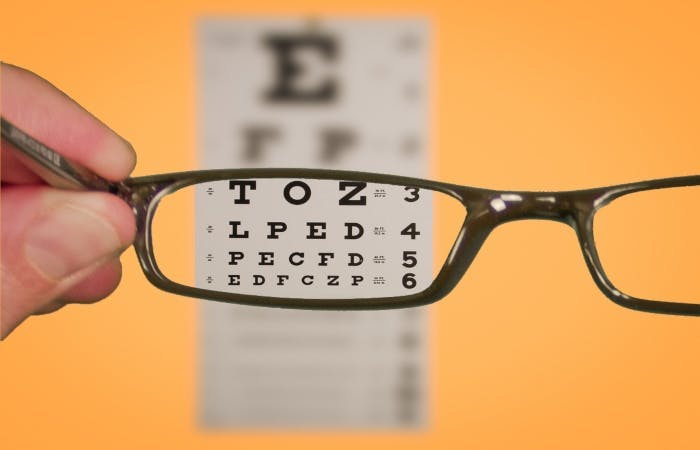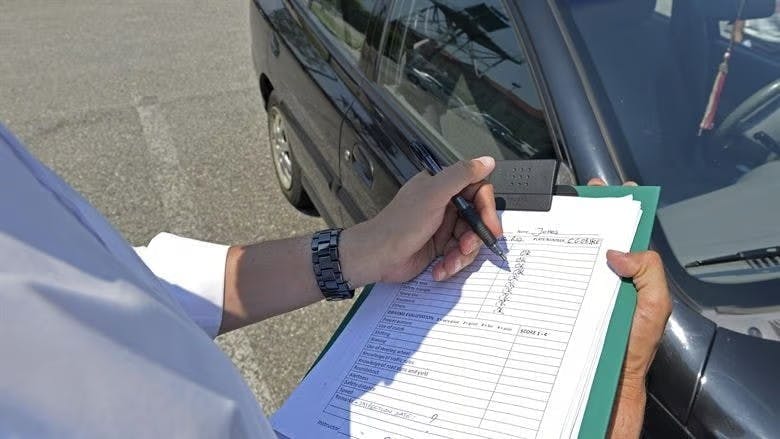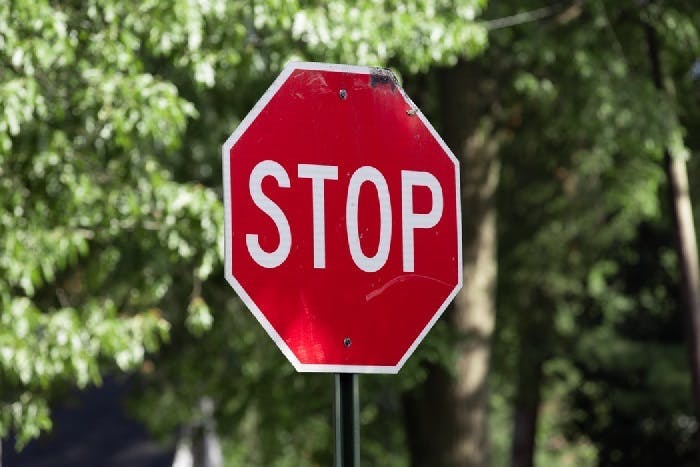
Perhaps your driving test will fly by. It might seem like no time has passed at all between meeting your examiner and parking up at the end. Or maybe it'll drag, as you slow-breathe your way through each skill and manoeuvre.
However it may feel on the day, examiners make sure that all practical tests are, so far as possible, equal. That means equal in difficulty, equal in how they're marked, and also equal in terms of length. Your test, just like everyone else's, will have a definite beginning, middle and end. And each section will last for a more-or-less certain amount of time. From arriving at the test centre, all the way through to receiving your feedback, we've got the full breakdown of timings for you.
We'll also guide you through the rare scenarios that would make your practical much longer or shorter than average. It may still be daunting to attend your driving test, but armed with this information, you can at least be fully prepared for what's in store.
How long does the practical test take?
For the sake of timings, we're going to look at the practical test in 3 different sections: the period before you start to drive, the time you spend with the engine on, and the feedback section after you've finished.
Before you start to drive
Just like with the theory test, we recommend getting to the test centre about 10 minutes early.
Once your test is called, your examiner will introduce themselves. You'll have to have your provisional licence checked, and sign a form to confirm that you’re insured to drive the vehicle you’ll be using for the test. You'll also have to confirm that you fulfil the citizenship requirements for a UK driving licence. This part will take around 2-3 minutes.
Once you’re all registered, your driving examiner take you out to the car, and the real test will begin. The first 2 sections of your test will happen before you even start the car.
The eyesight test

First up, the examiner needs to check your eyesight, and will ask you to read a number plate from 20 metres away. If you’re able to read it the first time, great. If not, you’ll get another two chances.
On the third go, the examiner will have to physically measure out the required distance, which will obviously take a little longer. Providing there are no issues with your vision, this part of the test will only take just a few seconds to complete. But getting out to the car will take a bit of time.
It varies from test centre to test centre, but we're usually talking about a couple of minutes.
It’s illegal to drive without adequate vision, so if you still can't read the number plate after 3 goes, you’ll be unable to continue with the rest of the test. To avoid this nightmare scenario, make sure you know you can meet the legal eyesight standards for driving.
You’re obviously allowed to wear any corrective eyewear (that’s glasses or contacts in plain English), but if you need them for the eyesight test, you must always wear them when you get behind the wheel.
'Tell me' car safety question
After proving that your vision is good enough for driving, you’ll get into the car. Your examiner needs to ask you two car safety questions during your test. They're referred to as the 'show me, tell me' questions, because you'll have to show the examiner how to do a certain task, and tell them how you'd go about another.
You'll be asked the 'tell me' question before you set off. Depending on the question, you might be able to verbalise the answer from the comfort of the driving seat. Alternatively, you may have to get out the car, open up the bonnet and explain to the examiner how you'd check something—the oil, for example.
If you fail your 'tell me' question, it won’t actually mean you’ve failed overall, although you probably should brush up on your car safety knowledge. Instead, your examiner will mark down the incorrect answer as a minor fault on your report sheet. You'll then continue with the test. Allow about 2 minutes for this.
Let's do a quick recap. So far, you'll have arrived about 10 minutes early, and will have spent about 6 minutes filling in paperwork, getting out to the car, reading a number plate, and answering a safety question.
All in all, that's about 16 minutes.
Driving
Next up is the bit we’re all here for. This is your chance to show off your observational skills at junctions and those we-used-to-stress-about-them-but-practice-makes-perfect hill starts. This part will last around 40 minutes in total, so how will you spend the time? About half of this section of the practical will be focused on independent driving. You’ll probably be asked to navigate somewhere using a sat nav (don’t worry, the examiner will both provide it and input the destination), but you may be asked to get to a specific location using road signs instead.
During the independent driving section, you’re being tested on whether you can prepare for junctions properly—like whether you can get into the right lane at a roundabout. It's not about how good you are at memory games. So, if you forget an instruction, you can always ask the instructor to repeat it.
So that’s about 20 minutes taken up; how will you spend the other 20?
Well, some of the practical test will be about your general driving. The examiner will give you various instructions and you’ll have to follow them safely and considerately. They'll be marking your observation skills, and your ability to adjust to any potential hazards along the way.
Sometime during the drive, they'll ask you the 'show me' question. You might have to demonstrate how to wash the windscreen, for example. Then you'll have to demonstrate a manoeuvre, to show you're confident at reversing. Finally, you might be asked to complete an emergency stop.
Practical test feedback

Your 40 minutes are pretty much up, and, as your driving test route will form a loop, you’ll soon find yourself back in the test centre car park. Try to remain focused until you’ve stopped the car—those last few seconds are still important to your test.
Once you've turned the engine off, the examiner will go through the mark sheet with you, explain any faults that you got, and count them up. Whether you’ve passed or failed, they’ll give you a bit of extra advice, either for solo driving, or for your next attempt at the test.
The time this takes will vary, depending how much feedback the examiner's got for you, but will usually take 3-4 minutes. The practical driving test, then, will take around 50 minutes, plus 10 minutes of waiting time when you arrive. A grand total of 1 hour, and you'll be back with your instructor, celebrating or commiserating, and on your way home.
Give or take a few minutes, that's going to cover nearly everyone. But are there any scenarios where you practical test would be significantly longer or shorter than this?
Let's take a look.
What if I get stuck in traffic?
So many people have questions about this that we’ve got a whole blog post on what happens if you get stuck in traffic on your driving test. It essentially boils down to this:
- Yes, there’s a greater chance of getting stuck in traffic at certain times of day, and
- Yes, it’s possible that the driving part of the practical will consequently last longer than the standard 40 minutes.
But if anyone knows the local roads well enough to circumvent standstill traffic, it’s going to be a driving examiner! Road conditions figure into their instructions, so you’ll probably just go on a shorter route if there are more vehicles on the road. And in terms of how long you'll be out there…
When the DVSA worked out the typical length of time of a practical, they observed tests at different times of day, and in varying traffic conditions. That's really the only way they could provide an accurate average. So most likely, you'll be driving for about 40 minutes, whatever traffic you hit.
Bottom line? Don’t lose sleep worrying about how the traffic may affect your driving time. Instead, just make sure you’re confident that your skills are good enough to pass the test, whatever situation occurs. If you're a bit prone to tailgating, for instance, it's probably time to sort that out.
How long is a driving test: FAQs
If I fail, will my driving test be cut short?

In most cases, you will carry on to the end of your driving test, even if you fail a few seconds in. Okay, that sounds frustrating, but chances are you won’t know for sure that you’ve failed—so you should just keep driving your best. And anyway, you’ve paid for that time in the car; you may as well use it for practice, and to receive some useful feedback!
One exception is if you commit a dangerous fault, which is one step worse than getting a major. They’re ones that—wait for it—involve actual danger to you, the examiner, the public or property”, like if you cause an accident. Obviously this is rare, but if you do end up becoming a really serious hazard to other road users, here’s what will happen. The examiner will immediately terminate your test, and may have to sort out some admin at the scene. They'll then take you back to the test centre, in what just may be the most awkward journey of all time. They won't even be able to drive you, because they're not insured in your car. Obviously, you'll fail.
There are only a few other other scenarios where your driving examiner could stop the test early, like if someone crashes into you, or you're feeling too ill to continue. These instances are rare, and vary case-to-case, so there’s really no predicting how long you’ll be there. If it happens straightaway, you'll have a much shorter test, but otherwise, you could be there for quite some time.
How long is an extended driving test?
Your practical test is only the beginning of a responsible driving career. You can get sent on a speed awareness course, instructed to pay a fine, or receive points on your licence for any misdemeanour on the road.
Serious offences, like driving with too much alcohol in your system, can result in you being disqualified from driving. In that case, you may be required to take an extended practical test before you get a new licence.
These take about 70 minutes for the driving part—you’ve got to really prove to the examiner that you can drive safely. Then there's the preliminary section and your examiner's feedback: around 20 minutes.
And remember, if you're sensible, you'll have arrived at the test centre 10 minutes early. We make that an hour and a 40 minutes in total.
How long is the theory test?
One of the worst things you can do—especially if you’re already feeling nervous about your test— is to stress about arriving late. If you’re unfamiliar with the location, scout it out on Google Maps the day before (other maps are available). Street View is excellent for checking out landmarks that may help you navigate to the right place.
Try to arrive about 10 minutes early, because you'll need to sign in at reception. Once you're pointed to a computer, you’re allowed a 15 minute practice session, which can help settle your nerves and get you familiar with the software you’ll be using for the test.
The theory test itself comprises 57 multiple-choice questions and 14 hazard perception clips. You’ll have a maximum of 50 minutes to complete the questions, but if you’re done sooner that’s fine too. Afterwards, you’re allowed a 3 minute break, and then you’ll move onto the hazard perception part of the test. Each scenario will last about a minute each, and you won’t be able to rewind or replay the videos.
There will be a 10 second countdown before each clip is played. All in all, you should be in and out after an hour and 35 minutes, tops.
If you’re dyslexic, you might be able to request extra time (double, in fact) for the multiple choice questions. That'll mean you could be in the test centre a little under 2 and a half hours.
Now that you know exactly how long the driving test takes, make sure you're prepared in other ways. Have a go at a mock hazard perception test, and check that you know what to take to your practical test.
Subscribe for driving advice, offers & more
We'd love to let you know about our courses, news and offers via email. You may unsubscribe at any time.
Star Genie Limited trading as PassMeFast. Company number 10093359
Copyright © 2024 owned by Star Genie Limited
PassMeFast, Blue Tower, MediaCityUK, Salford, M50 2ST

